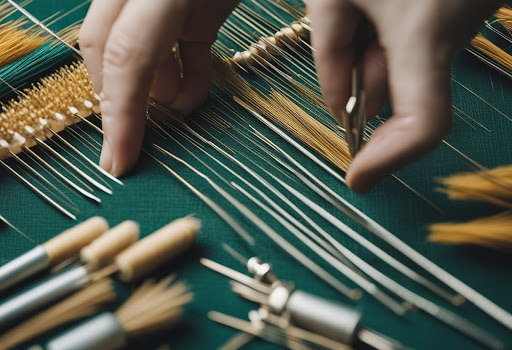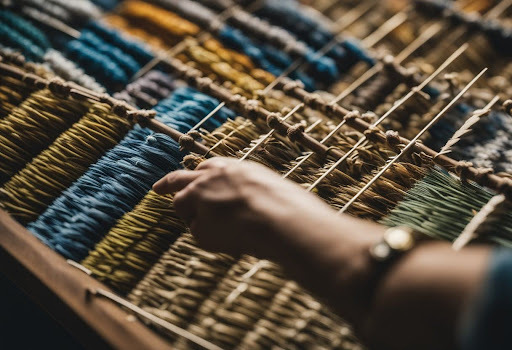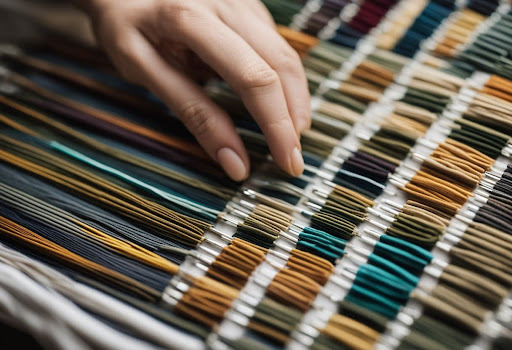Choosing the Right Needle for Your Needlepoint Project: A Guide to Perfect Stitches
Embarking on a needlepoint project can be as thrilling as it is meticulous. Selecting the appropriate needle is paramount; it can mean the difference between a project that's a delight to work on and one that causes unnecessary struggle. Tapestry needles come in varying sizes, and the choice of needle largely depends on the fabric count of your canvas and the thickness of your yarn. Using a needle that glides smoothly through the canvas, without enlarging the holes or splitting the thread, enhances the pleasure of stitching and the quality of your work.

Maintaining your tapestry needles is also crucial for ensuring they remain functional throughout the stitching process. Proper storage and care can extend the life of your needles, allowing for consistent performance and safeguarding your fabric and threads from damage. By looking after your needles, you not only preserve your tools but also the integrity and appearance of your needlepoint creations.
Key Takeaways
- Selecting the correct needle is essential for ease of stitching and project quality.
- Needle size should complement canvas fabric count and yarn thickness.
- Proper needle care prolongs their usability and protects the needlepoint work.
Using the Right Tapestry Needle

When choosing a tapestry needle for your needlepoint project, the size of the needle and the type you use can greatly affect your stitching experience and the finished quality of your work. We'll assist you in making the correct choice with a handy chart, insights on chenille needles, and tips to verify you've made the perfect selection.
Using This Chart to Select the Right Needle
|
Mesh Size |
Needle Size |
|
10-count |
Size 20 |
|
12-count |
Size 22 |
|
14-count |
Size 24 |
|
18-count |
Size 26 |
|
22-count |
Size 28 |
Utilise the above table to match the count of your canvas mesh to the appropriate tapestry needle size. A correctly sized needle will glide through the canvas with ease, neither too large to distort the holes nor too small to handle.
Using Chenille and Other Needles
Apart from tapestry needles, chenille needles are also an option for certain textiles due to their sharp point and large eye. They are specifically effective for embroidering on fine-weave fabric. Always ensure the needle complements your thread and fabric to prevent snags or damage.
How to Know If You Have Chosen the Right Needle
The needle is appropriate if it passes through the material smoothly without undue force and doesn't enlarge the holes. Your thread should also not fray excessively, signifying a match between needle eye and thread thickness. If stitching feels awkward or strained, consider reassessing your needle choice.
Taking Care of Your Tapestry Needles

Proper maintenance of tapestry needles is vital to ensure optimal performance and longevity. Below we provide you with straightforward guidelines on taking care of your tapestry needles:
Storage
- Keep dry: Store your needles in a dry place to prevent rust.
- Organised container: Use a needle case or pincushion to keep them organised.
Handling
- Gentle use: Avoid bending the needles which can lead to breakage.
- Correct size: Use the appropriate size for your canvas to prevent damage.
Cleaning
- Regular wipe: Clean needles regularly with a soft cloth.
- Oil occasionally: Apply a small amount of sewing machine oil to prevent rust.
Periodic Checks
- Inspect regularly: Check for signs of wear such as bending or dull points.
- Discard appropriately: Replace any damaged or worn needles.
Needle Types
|
Needle Type |
Characteristics |
Use Case |
|
Tapestry |
Blunt end, large eye |
Canvas and counted thread |
|
Chenille |
Sharp point, large eye |
Penetrating tight weaves |
|
Beading |
Very thin, with a small eye |
Adding beads to needlework |
By adhering to these care practices, we guarantee that your tapestry needles will remain in good condition, aiding in the creation of beautiful needlepoint projects.



